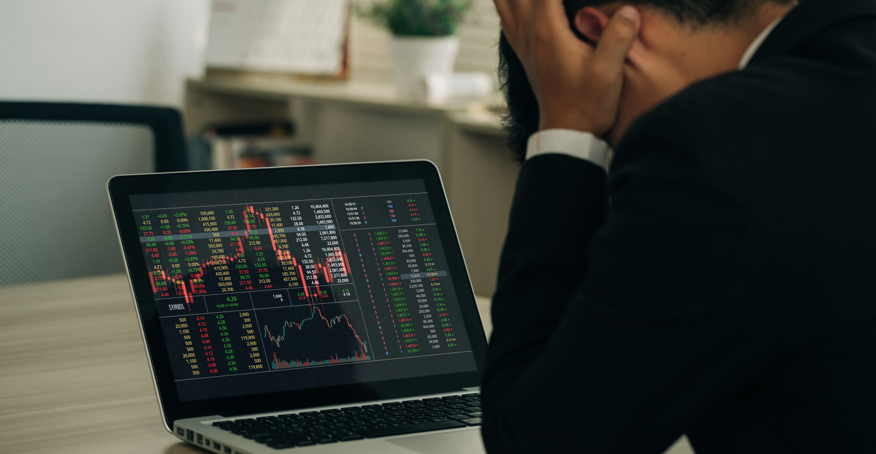For investors, we see the inversion as a good news/ bad news story.
The inflation glass is emptying: Under the traditional view, yields normalize for expected inflation. The inverted curve suggests that investors expect inflation to fall, with expectations for higher near-term inflation pushing up the 2-year yield relative to longer dated yields where inflation is expected to be lower. In the current case, comparing the next two years to the next ten, the drop in inflation could be large enough on its own to explain the inversion.
The good news is that a decline in inflation should allow central banks to slow or suspend their rate hikes without further damaging the global economy. Lower inflation is likely to keep wages and costs down, allowing corporate margins to stabilize and earnings to grow.
The economic glass is emptying: The second explanation usually given for an inversion is that investors expect lower future economic growth, which makes longer-term bonds more attractive on a relative basis, with investors bidding down their yields. The bad news is that lower future growth or an economic contraction are not good for equities.
Inverted yield curves are commonly associated with major economic downturns, although the lag between inversion and an actual recession varies. Typically, a recession follows twelve to eighteen months after the curve inverts. The latest inversion began in June 2022 which signals a potential recession in mid to late 2023. With its latest gyrations, the market still appears unsure about this, however.
50 ways to break a bubble: Higher interest rates have reset the discount rate on all asset classes this year, which explains a large share of the year-to-date decline in equities. Most stocks are down; crypto has collapsed; tech valuations have cratered; commodity prices are receding and even bonds have felt the pressure. But deflating the ‘everything’ bubble has not caused much damage to the real economy so far. North American employment levels continue to rise and, for the most part, consumers and businesses continue to spend.
A soft landing certainly remains possible. With shipping rates and commodity costs falling, corporate margins are likely to stabilize even as wage pressures continue. China could regain steam following its on-again off-again reopening year. Europe could navigate its energy and inflation shocks, avoiding the worst effects of an economic downturn. If so, 2023 could turn out to be quite favorable for stocks.
If S&P 500 operating earnings come in 10% below current estimates (+2% to 3% versus 2022), for example, then investors are currently paying 19.3x earnings. Where realized earnings have fallen between 18x and 20x their trailing price, one-year S&P 500 returns have averaged 13% over the last thirty years.
Recession risks should not be ignored, however. If inflation persists, central banks continue to raise rates and/or problems in Europe and elsewhere spill over, then we could easily see a retreat in employment levels and a deeper global recession. Versus consensus estimates, a 30%+ drop in operating earnings is typical of most recessions, which would push the current S&P 500 multiple up to 24.8x. Multiples above 22x are almost always associated with negative one-year returns, averaging -7% over the last thirty years.
We remain cautious on next year’s outlook. Our base case is for interest rates to continue to rise in the first half, further deflating the ‘everything’ bubble, but with minor long-term fallout for the global economy.
We would still avoid European exposures, but we see pockets of opportunity in North American equities. Companies with strong free cash flows, clean balance sheets and committed management teams are likely to post positive returns in 2023. The market may be less forgiving to companies without these characteristics, however.
Our affiliate, Veritas Investment Research Corporation, continues to sort out the good from the bad and remains one of the best research shops on the street.
Year-to-date through November 30, 2022, the NASDAQ was down 26.1%, the S&P 500 was down 13.1% and the S&P/TSX was down 1.0%. Over the same period, our Canadian Equity Fund rose 1.8% and our Absolute Return Fund was 3.5% lower. (Performance based on F series).
We remain focused on capital preservation during the current market volatility while pursuing opportunistic investments to drive returns.

